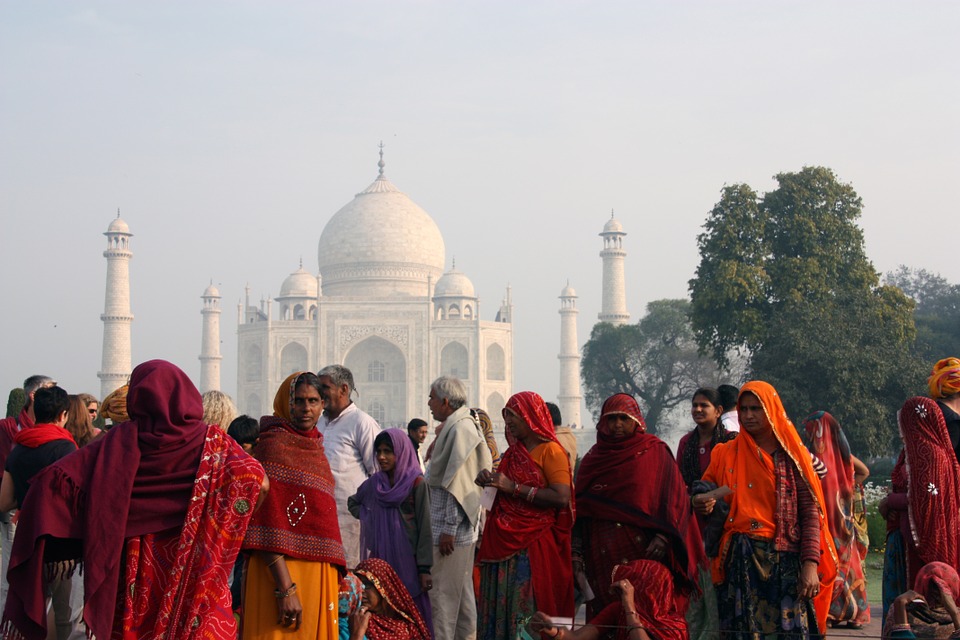
Terrain and Topography of India: mountains, valleys, and plains.
India is a land of diverse and varied terrain, with its topography ranging from majestic mountain ranges to vast plains, coastal regions, and plateaus. The country’s terrain has played a significant role in shaping its history, culture, and economy. From the towering peaks of the Himalayas in the north to the fertile plains of the Indo-Gangetic region, India’s landscape is as diverse as its people. The country’s topography has also influenced its climate, biodiversity, and agricultural practices, making it a fascinating subject for study and exploration.
The diverse terrain of India has also contributed to the country’s rich biodiversity, with a wide range of flora and fauna thriving in different ecosystems. The varied topography has also led to the development of unique cultures and traditions in different regions of the country. From the snow-capped peaks of the Himalayas to the lush green valleys of the Ganges and Brahmaputra rivers, India’s terrain is a source of inspiration and wonder. In this article, we will explore the different aspects of India’s topography, from its majestic mountain ranges to its fertile plains and coastal regions, and delve into the significance of each in shaping the country’s landscape and culture.
Summary
- India’s terrain and topography are incredibly diverse, ranging from majestic mountain ranges to vast plains and lush valleys.
- The Great Himalayas, India’s highest and most majestic mountain range, are home to some of the world’s highest peaks, including Mount Everest.
- The Indo-Gangetic Plain is India’s most fertile region, known for its rich agricultural output and as the heartland of Indian civilization.
- The Western and Eastern Ghats are coastal mountain ranges that run parallel to the Arabian Sea and the Bay of Bengal, respectively and are known for their biodiversity and scenic beauty.
- The Aravalli Range, India’s oldest mountain range, is a series of eroded hills that stretch across the states of Rajasthan, Haryana, and Gujarat.
The Great Himalayas: India’s Majestic Mountain Range
The Himalayas, often referred to as the “abode of snow,” are one of the most iconic and majestic mountain ranges in the world. Stretching across five countries, including India, Nepal, Bhutan, China, and Pakistan, the Himalayas are home to some of the highest peaks on the planet, including Mount Everest, the highest point on Earth. In India, the Himalayan range spans several states in the northern part of the country, including Jammu and Kashmir, Himachal Pradesh, Uttarakhand, Sikkim, and Arunachal Pradesh.
The Himalayas play a crucial role in India’s climate and ecology, acting as a barrier to the cold winds from Central Asia and influencing the monsoon patterns that bring rainfall to the Indian subcontinent. The range is also a source of several major rivers in India, including the Ganges, Yamuna, Brahmaputra, and their tributaries, which provide water for irrigation, drinking, and hydropower generation. The Himalayas are not only a natural wonder but also hold immense cultural and spiritual significance for the people of India. The region is home to several pilgrimage sites, ancient monasteries, and diverse ethnic communities that have thrived in this challenging yet awe-inspiring landscape for centuries.
The Vast Indo-Gangetic Plain: India’s Fertile Heartland
The Indo-Gangetic Plain is one of the most fertile and densely populated regions in India, stretching across the northern and eastern parts of the country. This vast alluvial plain is formed by the sediment deposits of the Ganges, Brahmaputra, and their tributaries over millions of years. The fertile soil and abundant water supply from these rivers have made the Indo-Gangetic Plain an agricultural powerhouse, producing a significant portion of India’s food grains, fruits, and vegetables.
The plain is also home to several major cities in India, including Delhi, Kolkata, Lucknow, Patna, and Varanasi, which have been centres of culture, trade, and governance for centuries. The Indo-Gangetic Plain has also been a cradle of ancient civilizations, with archaeological sites such as Harappa and Mohenjo-Daro dating back to the Indus Valley Civilization. The region’s flat terrain and rich soil have made it an ideal location for human settlement and agricultural activities for thousands of years. The Indo-Gangetic Plain continues to be a vital part of India’s economy and cultural heritage, playing a significant role in shaping the country’s history and identity.
The Western and Eastern Ghats: India’s Coastal Mountain Ranges
The Western and Eastern Ghats are two parallel mountain ranges that run along the western and eastern coasts of India, respectively. These coastal ranges are known for their lush forests, diverse wildlife, and unique ecosystems that support a wide variety of plant and animal species. The Western Ghats are older and taller than their eastern counterpart, with peaks reaching over 2,000 meters in height. The region is also home to several hill stations, waterfalls, and national parks that attract tourists and nature enthusiasts from around the world.
The Eastern Ghats, while not as well-known as their Western counterpart, are equally important in terms of biodiversity and ecological significance. These mountains are home to several indigenous tribal communities that have preserved their traditional way of life for generations. The Western and Eastern Ghats play a crucial role in regulating the climate of the Indian subcontinent by intercepting the moisture-laden winds from the Arabian Sea and Bay of Bengal. The region also serves as a vital water catchment area for several major rivers in southern India, including the Godavari, Krishna, and Kaveri. The Western and Eastern Ghats are not only natural wonders but also serve as lifelines for millions of people who depend on their resources for sustenance and livelihood.
The Aravalli Range: India’s Oldest Mountain Range
The Aravalli Range is one of the oldest mountain ranges in India, stretching across the states of Rajasthan, Haryana, and Gujarat. While not as tall or imposing as the Himalayas, the Aravallis have a unique charm and significance due to their age and geological history. The range is known for its rugged terrain, rocky outcrops, and sparse vegetation, making it an ideal habitat for several species of wildlife such as leopards, hyenas, and various bird species.
The Aravalli Range has also been a source of mineral wealth for centuries, with rich deposits of minerals such as marble, granite, zinc, lead, and copper found in its foothills. The region has been an important centre for mining activities and stone quarrying since ancient times. The Aravallis also hold cultural and historical significance, with several ancient forts, temples, and step-wells dotting the landscape. The range has been a witness to countless battles, trade routes, and human settlements over millennia, shaping the history and heritage of the region.
The Deccan Plateau: India’s Elevated Landmass
The Deccan Plateau is a vast elevated landmass that covers most of southern India between the Western and Eastern Ghats. This plateau is characterized by its flat-topped hills (mesas), deep valleys (ghats), and extensive lava plateaus formed by volcanic activity millions of years ago. The Deccan Plateau is home to several major rivers such as the Godavari, Krishna, Tungabhadra, and Kaveri that originate from the Western Ghats and flow eastward towards the Bay of Bengal.
The plateau has been an important centre for agriculture, trade, and cultural exchange for centuries due to its fertile soil and strategic location. Several ancient empires such as the Cholas, Pallavas, Vijayanagara Empire, and Marathas have flourished on the Deccan Plateau, leaving behind a rich legacy of art, architecture, and literature. The region is also known for its rich biodiversity, with several wildlife sanctuaries and national parks providing refuge to endangered species such as tigers, elephants, and leopards. The Deccan Plateau continues to be a vital part of India’s economy and cultural heritage, contributing to the country’s prosperity and diversity.
The Brahmaputra and Ganges River Valleys: India’s Lush and Fertile Valleys
The Brahmaputra and Ganges River Valleys are two of the most fertile and lush regions in India, supporting a thriving agricultural economy and diverse ecosystems. These river valleys are formed by the sediment deposits of the Brahmaputra and Ganges rivers over millions of years, creating a vast alluvial plain that stretches across several states in northern India. The fertile soil and abundant water supply from these rivers have made these valleys ideal for rice cultivation, leading to them being known as the “rice bowl” of India.
The Brahmaputra and Ganges River Valleys are also home to several important cultural and religious sites such as Varanasi, Allahabad (Prayagraj), Patna, Guwahati, and Kaziranga National Park. These regions have been centres of trade, pilgrimage, and intellectual exchange for centuries due to their strategic location along major river routes. The river valleys are also home to diverse flora and fauna, with several wildlife sanctuaries providing refuge to endangered species such as one-horned rhinoceroses, Bengal tigers, and Asian elephants. The Brahmaputra and Ganges River Valleys continue to be vital lifelines for millions of people who depend on their resources for sustenance and livelihood.
In conclusion, India’s terrain is a reflection of its rich history, culture, biodiversity, and economic prosperity. From the towering peaks of the Himalayas to the fertile plains of the Indo-Gangetic region and the coastal ranges of the Western and Eastern Ghats, each aspect of India’s topography holds immense significance in shaping the country’s landscape and identity. The diverse terrain has also contributed to India’s rich biodiversity, with unique ecosystems supporting a wide variety of plant and animal species. As we continue to explore and appreciate India’s varied topography, it becomes evident that this diverse landscape is not only a source of natural beauty but also a testament to the resilience and adaptability of its people throughout history.
FAQs
What are the major mountain ranges in India?
The major mountain ranges in India include the Himalayas, the Western Ghats, the Eastern Ghats, and the Aravalli Range.
What are the major plains in India?
The major plains in India include the Indo-Gangetic Plain, the Brahmaputra Plain, and the Thar Desert.
What are the significant valleys in India?
The significant valleys in India include the Kashmir Valley, the Kangra Valley, the Tawi Valley, and the Brahmaputra Valley.
How does the terrain and topography of India affect the climate?
The diverse terrain and topography of India contribute to a wide range of climates, from the alpine climate in the Himalayas to the tropical climate in the coastal plains. The mountains influence the monsoon winds, leading to variations in rainfall across the country.


